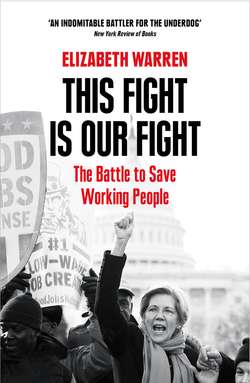Читать книгу This Fight is Our Fight: The Battle to Save Working People - Elizabeth Warren - Страница 21
REGULATION WORKED
ОглавлениеWorld War II demanded massive mobilization. The war effort put millions of people to work fighting for our country, while millions more worked to manufacture the equipment and supplies those soldiers and sailors needed. The war, for all its terrible carnage and destruction, pumped new spending into the economy.
But it was Roosevelt’s new vision of the role of government that fundamentally changed America’s economic system for decades to come. Coming out of the Great Depression, an American president decided that we could do better—and we did. For nearly half a century, Roosevelt’s ideas influenced his successors, both Democratic and Republican. Leaders used government more deliberately to level the playing field in markets and to create more stability. In the 1970s, a Republican president added the Environmental Protection Agency and the Consumer Product Safety Commission so that companies couldn’t cut costs by dumping their wastes in our rivers or by selling dangerous products with hidden defects. Antitrust law was enforced, and small businesses got a chance to take root and grow. America kept that cop on Wall Street and continued reining in the biggest corporations.
And here’s the thing: regulation worked.
By the postwar era, the boom-and-bust economy was gone. There were some ups and downs, but nothing like the crash of 1929. Instead, once the new financial regulations were in place, from the mid-1930s forward, America experienced decade after decade of economic peace. No crashes. No bread lines. No need to shutter the banks.
But we didn’t just hold steady: year over year, decade over decade, our country got richer. From the late 1930s forward, our gross domestic product (GDP) also maintained a pretty steady upward march.
Best of all, as our country got richer, our families got richer. Not everyone, but almost everyone, did better. Incomes rose. In 1947, after the war created labor shortages and wages were allowed to rise, life looked good for the middle class. But the good times had only just begun. Adjusted for inflation, a man working full-time and making the median income would see his earnings grow 65 percent between 1947 and 1980. His family was spending that money, too, meaning that businesses prospered and corporations’ profits swelled. Small businesses flourished. Our country was rich beyond the wildest dreams of earlier generations.
By 1960, only two decades after the end of the Great Depression, it was clear that America had produced the equivalent of an economic miracle: we had built the greatest middle class on earth. The skies were sunny, and our future looked bright.
